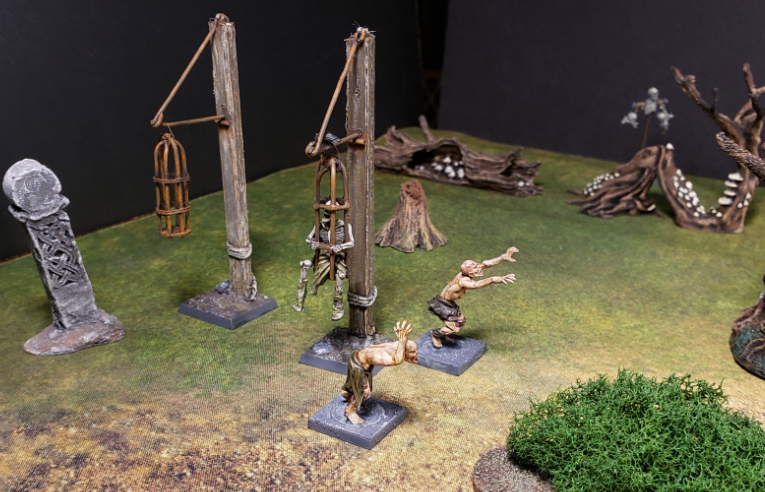HeroTeX is a LaTeX package which automatically formats the standard one-page Quest notes used in HeroQuest.
All you need to get started is:
The rest of this post will demonstrate how to quickly create your first Quest.
HeroScribe
You are here because you are using HeroScribe for Quest maps and would like to create authentic looking Quest notes to match. I run Linux, and from there "java -jar heroScribe.jar" works right out of the box after downloading the HeroScribe package.
I'm sorry that I cannot help you with this part if you are having issues.
HeroTex Package
Download the HeroTex zip file. You may want to unzip it and have a look, but this is not necessary.
There are many files, but most of them are graphical assets with duplicate entries for Color and Black & White formats as well as support for Chaos/Dread naming conventions.
LaTeX
If you already know how to use PDF LaTeX and have a full fonts package installed, you should be able to compile and view the DemoQuest. And this should be enough to get you using all of the provided tools.
If you are not familiar with LaTeX, then you can get setup quickly by heading over to
Overleaf.com and creating a free account with unlimited projects (of limited scope). Thankfully these simple HeroQuest documents are within those limits. I signed up with my Google account and it was very easy.
- Create your Overleaf account
- Create a New Project, select "Upload Project" and feed it the HeroTeXv01.zip file you just downloaded.
- Switch the "main document" to DemoQuest.tex
- Press "menu" button on the Overleaf website
- Find the "Main document" entry and change it from the random file it has selected by default to DemoQuest.tex.
- Press the Recompile button to generate the PDF
Generating your own quest involves uploading your own map and entering your quest text.
You should be entering your notes in the "code editor" and as text and a few useful commands. I took a quick look at the visual editor and I do not see how it will be helpful for us, but I'd like to be proven wrong here.
The DemoQuest has some helpful comments, but you can ask me questions in the comments here if you need help.
Enjoy!

























